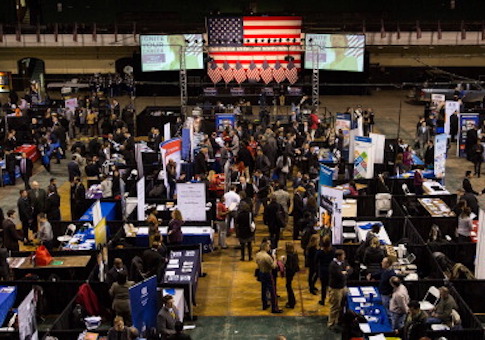The unemployment rate for all Americans declined to 4.3 percent in May, a 16-year low, according to numbers released by the Bureau of Labor Statistics.
The number of unemployed individuals declined by 233,000 in May and the percentage of 4.3 percent has not been this low since May 2001, 16 years ago.
This measure, however, does not account for those individuals who have dropped out of the labor force—it simply measures the percent of those who did not have a job but actively sought one over the month.
In April, there were 608,000 more Americans who dropped out of the labor force. The number of those not in the labor force increased from 94,375,000 in April to 94,983,000 in May. This resulted in the participation rate, which is the percentage of the population that has a job or actively looked for one in the past month, declining from 62.9 percent to 62.7 percent in May.
There were 5,219,000 Americans working part-time in April who would rather have a full-time job but cited economic reasons for not having such employment. This number declined by 53,000 over the month.
According to the bureau, involuntary part-time workers are "persons who indicated that they would like to work full time but were working part time (1 to 34 hours) because of an economic reason, such as their hours were cut back or they were unable to find full-time jobs."
Overall, total nonfarm payroll employment increased by 138,000 in May.
"Small business owners are starting to convert their optimism into action," said National Federation of Independent Business President and CEO Juanita Duggan. "It's a sign of a healthier economy."
"Firms are adding workers, creating new positions, and increasing compensation to attract better applicants and keep their best performers," said Chief Economist Bill Dunkelberg. "If there is a dark cloud in the data, it is that there aren't enough qualified workers to fill the available jobs. That puts a strain on small employers."
"The really good news is that small firms want to hire, and they are trying hard to create more jobs. The bad news is that they're having a very hard time finding qualified workers," said Dunkelberg. "That's forcing them to increase compensation to stay competitive and hire temporary workers, but they are still having a difficult time increasing prices to absorb the additional costs."
